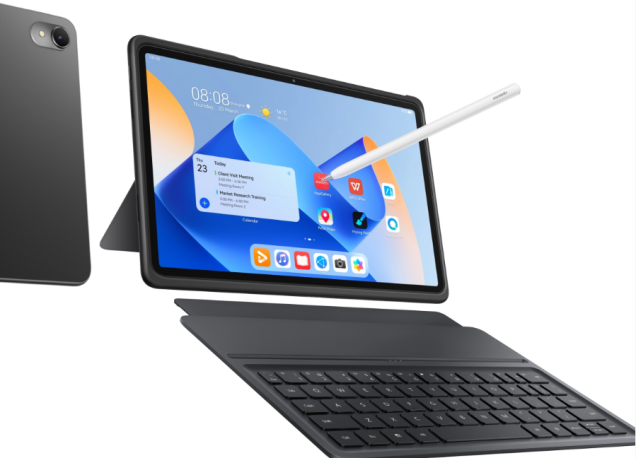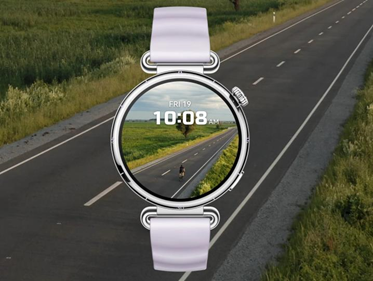Security cameras are great for keeping an eye on your property and I can't imagine not having them. But sooner or later you're going to have trouble connecting to any or all of your cameras. I'll explain the most common problems, that would lead to it.
What are the most common security camera not working problems and how to solve them?
The camera is unplugged.
The camera is too far from your router.
You are entering the wrong username and password.
Has your router been reset or replaced?
The DVR or NVR has not been connected.
The DVR or NVR has been disconnected from your router.
Your security cameras have been hacked.
1. Is the camera plugged in?
Wireless security cameras require power to work. Some wireless security cameras are battery operated, while others are plugged into an outlet/socket.
A common issue with offline security cameras can be caused by either a dead battery or unplugging the power cord from the camera or wall outlet.
First, make sure the camera is connected to AC power or make sure the power cord is connected to the camera. If your camera is battery powered, change the battery and wait 2-3 minutes for the camera to boot up .
After you turn on the camera, it takes a few minutes for the video to appear on your smartphone. Most cameras have lights on the front of the camera. You see the light on the camera as soon as you plug it in or change the battery.
If the video doesn't appear after a few minutes, you may need to close and reopen the app.
2. Make sure the camera is not too far from your router.
Most WiFi cameras have a signal strength indicator in the camera's settings. Go to the camera settings in the app and look for the camera status and make sure the WiFi signal strength is within an acceptable range of your WiFi router.
Wireless camera signal strength
Explanation of signal strength
Most cameras will display signal strength and give you a guide on what signal strength means. Some highlight signal strength in either green, yellow, or red color.
If the signal strength is red, the WiFi signal is poor, amber means it's acceptable but could be better, and green means the signal strength is good.
If your camera doesn't have a signal strength meter, try moving it closer to your WiFi router. I usually plug them in within 5-3 feet of the router and wait a few minutes for the camera to boot up.
When the camera starts working, unplug it again and move it a little further away. Repeat this until you get to the point where it doesn't work and you know how far it can get from the router until it's out of reach.
What if you put it near the router and it still doesn't work?
Some wireless cameras have an Ethernet port on the back of the camera. If you have an Ethernet cable, plug the camera directly into your router and wait for it to boot up.
If you don't see any video from the camera after a few minutes, close and reopen the app. If the camera works, the problem is most likely caused by entering an incorrect WiFi password.
3. Have you recently changed the password for your WiFi network router?
If you recently changed your WiFi password, your security cameras will not connect to the network. Login to the camera app and go into the setting and update the new WiFi password.
4. Did you reset your router recently?
If you reset your router, your wireless cameras will not connect because either the password has changed or the camera is no longer connected to your router.
Some surveillance cameras do not offer you the option of entering a WiFi password, instead they connect to your router using the WPS button.
WPS stands for WLAN Protected Setup.
Connect your surveillance camera to your router using the WPS button.
Bring the camera close to your router and plug it in. Wait 2 to 3 minutes for it to boot up.
Press the WPS button on the router for three seconds until the light starts flashing. The WPS light will blink for a few minutes to give you time to press the WPS button on the back of the camera.
Some cameras may not have a button. Instead, you need to insert a paperclip into a small hole on the back of the camera and press in for three seconds.
An orange light will start flashing on the front of the camera to indicate that it is connected to the router. When the camera is successfully connected, it will stop flashing. It shouldn't take more than 30 seconds for the camera to connect to the router connects to the router. Sometimes you may need to do this step a second time if the connection fails.
Why are IP cameras offline?
Make sure your cameras are connected.
IP cameras have a blinking light either on the front, back or inside the camera when powered on or connected to the network. If you don't see any lights on the camera, make sure the camera has power.
There are two ways to turn on an IP camera:
By using a transformer connected to an outlet or power adapter near the NVR.
By using Power over Ethernet (POE). POE cameras only need one cable from the Ethernet switch to the camera for video and power. The Ethernet switch is either built into the NVR (Network Video Recorder) or can be installed as a separate unit in mounted near the NVR.
Check if your camera has power.
If the camera uses a transformer or AC adapter, make sure it's plugged in and wait a few minutes for it to turn on.
If the camera is powered via ethernet, make sure it is connected to the POE ethernet switch.

If the POE switch is not built into the NVR, not all ports on the back of the Ethernet switch may be POE ports. Some of the ports are usually standard ports that do not power the camera.
Make sure the camera is connected to a POE port and not a standard router port.
Reboot the camera
IP security cameras operate 24/7 and, like computers, need to be restarted from time to time. There are several ways to restart the cameras.
Reboot the NVR. If your IP cameras are directly connected to the NVR, you can simply reboot the NVR. By rebooting the NVR, you temporarily cut off power to the IP cameras, allowing them to restart.
Disconnect the Ethernet cable from the camera or Ethernet switch
If the cameras are connected to a separate Ethernet switch and not to the NVR, you can turn off the Ethernet switch and restart. Turning off the Ethernet switch will also turn off any other devices connected to it.
If the IP cameras are powered by a power adapter, you can disconnect or reset the power adapter, wait 10 seconds and reconnect it. This will also turn off any other cameras connected to the power supply.
If the camera uses a transformer, unplug the transformer, wait 10 seconds, and plug it back in.
5. Your DVR or NVR might be offline?
You'll know when your DVR (Digital Video Recorder) or NVR (Network Video Recorder) is offline because you'll get an error message when you try to view your cameras on your smartphone. It says something like Connection failed or the camera is offline.
The most common reasons for a DVR or NVR to be offline are:
The DVR or NVR is not connected.
The DVR or NVR is not plugged in and has no power. Make sure the lights on the front of the DVR or NVR are on. If not, check the following:
Make sure it is plugged into the power outlet.
Check the power strip or surge protector and make sure they are turned on and plugged in.
Check the power cord on the back of the DVR or NVR. The cord may have been unplugged from the back of the unit or is not making a good connection.
6. The DVR or NVR is disconnected from the network
Check the Ethernet cable. It could be unplugged from the router and no longer connected to the internet.
Verify that the router is unplugged and not receiving power.
There is a setting in your router called port forwarding that allows you to view your cameras remotely. If the router has been reset or replaced, port forwarding will be disabled and you will not be able to view your cameras remotely.
I can't tell you how to set up port forwarding as it's different for every router. You can google port forwarding for your router to find out what you need to do.
To set up port forwarding, you need the administrator username and password for your router. Then you need to login to your DVR or NVR, go to the Network tab and find the IP address and port used.
In the settings you will see several port numbers, but the port you need is usually called server port, watch port, mobile port.
Setting up port forwarding is a little tricky and not something most people want to do. So it might be best to call your security company if you have one, or get a company like Geek Squad to do it for you.
Your IP address may have changed
Every device connected to the internet has an IP address. Your internet service provider assigns your modem a dynamic IP address. Dynamic means that the IP address changes and is not always the same.
When viewing your security cameras remotely, the app on your phone will attempt to connect to your cameras using the IP address provided to your modem. If this IP address has changed, you will not be able to connect.
That's why we use what's called a DDNS address instead of your IP address.DDNS stands for Dynamic Domain Name Server, and this server keeps track of your changing IP address so you can see your cameras all the time.
However, some DVRs or NVRs do not update immediately or sometimes the new IP address update fails. To correct this, you need to call the person or company who installed your system and ask them to enter your IP address update manually in your DDNS account.
Reboot your router
When all else fails, restarting the router sometimes helps. Your router works 24/7 and like everything else, it just needs a reboot to work properly.
There's no harm in rebooting your router before doing any of the other steps mentioned here. There have been a few occasions where I've spent an hour checking everything and rebooting the router to fix the problem.
7. Your security cameras may have been hacked.
The hacking issue mainly affects analog and IP wired security camera systems. Hacking has become a big problem for security cameras and one of the symptoms of hacking is that the user cannot login to view their cameras.
Someone who hacks into your cameras can erase your username and password, preventing you from logging in. To find out if your system has been hacked, you need to login to your DVR or NVR first and follow these steps
To login you need to connect a video monitor to the DVR if you don't already have one and go into the settings menu. If your system has been hacked you may not be able to login to the DVR at all as the DVR may have blocked you or the Username and password have been deleted.
You will know if you have been blocked from the DVR because when you try to log in you will see an error message like "The user has been blocked, try again later".
You can try restarting the DVR by turning it off for about 10 seconds and then turning it back on. This usually unlocks the user and allows you to get into the settings menu.
If you restart the DVR and still cannot login to the DVR, you need to contact the manufacturer of the DVR or the person who installed it.
If you can log into the DVR, go to the main menu, then to user settings and check if users have been added to the system. If not, go to the Add users or accounts tab and create a new user profile for yourself. Then try logging into the app and see if you can view your cameras.
If you have been hacked, you also need to check the video settings for the cameras. Sometimes the hacker maximizes all video settings like contrast and color to the point where the image is completely black making it look like the camera is not working.
To check this, locate the video settings, which are usually found under the Camera tab, and reset the values to the defaults if possible, or change them manually.
Once you have reset the video settings, you will see the cameras image on the video monitor.
diploma
I hope some of these tips help you. Although these tips are general tips and are not specific to any particular make or model of security camera, most security cameras have very similar settings.








